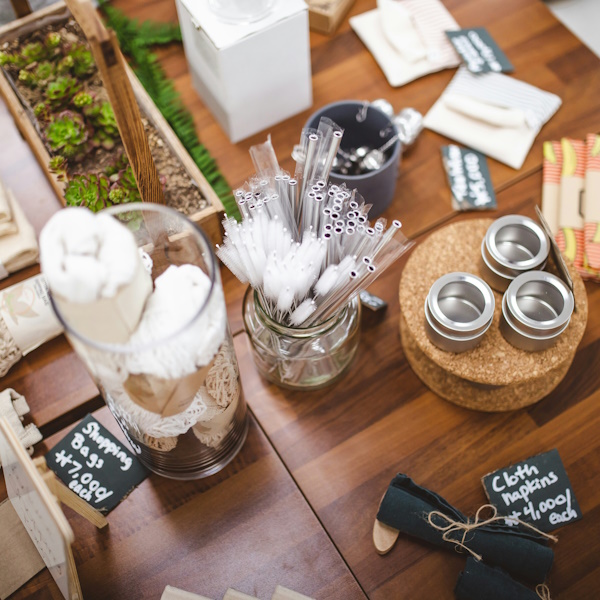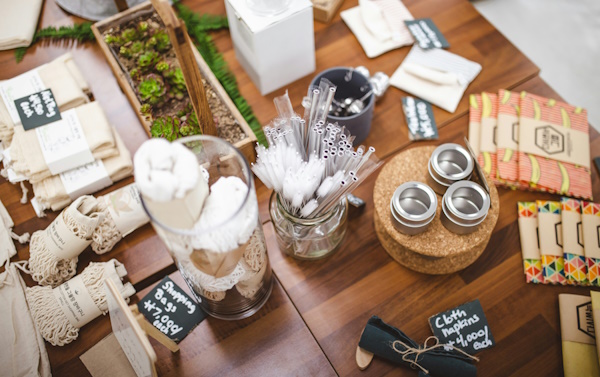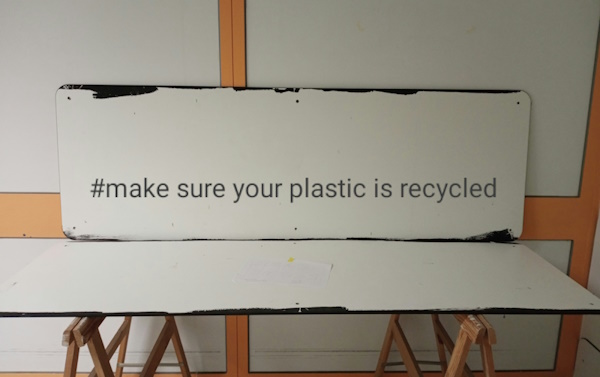Guide to Ethical Fashion Choices: Building a Sustainable Wardrobe
In today's world, where your choices speak louder than words, making ethical fashion choices has become more than just a trend—it's a statement. You're not just choosing what to wear; you're deciding on the kind of impact you want to have on the planet and its inhabitants. It's about being stylish and socially responsible, all at once.
Navigating the world of ethical fashion can seem daunting at first, but it's simpler than you might think. With a little knowledge and a lot of heart, you can transform your wardrobe into a force for good. You'll find that choosing ethically made garments not only elevates your style but also contributes to a more sustainable and fair world. Let's dive into how you can make fashion choices that feel as good as they look.
Why Choose Ethical Fashion?
Choosing ethical fashion isn't just about updating your wardrobe—it's about making a deliberate choice to support practices that benefit people and the planet. When you opt for ethical fashion brands, you're casting a vote for fair wages, safer working conditions, and more sustainable production methods. Ethical fashion champions the idea that beautiful clothes shouldn't come at the cost of exploited labor or environmental devastation.
Ethical fashion brands are committed to transparency. They're open about where their materials come from, how their garments are made, and who's making them. This transparency allows you, as a consumer, to make informed choices about the clothes you wear. It's about knowing that the T-shirt you love supports a supply chain that's fair and clean.
Moreover, ethical fashion takes a stand against the fast fashion industry's negative environmental impact. Fast fashion is notorious for contributing to pollution, waste, and water contamination. In contrast, ethical fashion brands often use sustainable materials and aim to minimize waste in their production process. By choosing ethical fashion, you're helping reduce your environmental footprint.
Another compelling reason to choose ethical fashion is its uniqueness and quality. Ethical fashion pieces are crafted with attention to detail, often in smaller batches that ensure higher quality. These pieces are designed to last, making them a better investment in the long run. You're not just buying a garment; you're investing in a piece of art that tells a story.
| Reasons to Choose Ethical Fashion | Impact |
|---|---|
| Fair wages and safer working conditions | Positive social impact |
| Transparency in production | Informed consumer decisions |
| Sustainable materials and processes | Reduced environmental footprint |
| High quality and uniqueness | Better investment and personal expression |
Ethical fashion invites you to be part of a movement that values human dignity, environmental care, and genuine style. It's a choice that aligns with a conscientious lifestyle, offering an opportunity to reflect your values in your fashion choices. By opting for ethical fashion, you're not just making a style statement; you're contributing to a more sustainable, fair, and beautiful world.
Understanding Ethical Fashion
When you delve into ethical fashion, you're embracing more than just style; you're supporting a movement that values human rights and environmental sustainability. Ethical fashion ensures that everyone in the supply chain, from the farmers growing the cotton to the workers sewing the garments, is treated fairly and works in safe conditions. Unlike fast fashion, which often exploits labor and disregards environmental concerns, ethical fashion brands are committed to transparency, allowing you to know where and how your clothes are made.
Sustainable materials play a huge role in ethical fashion. Brands committed to this cause often use organic cotton, recycled fabrics, and other eco-friendly materials that have a lower impact on the planet. These materials are not only better for the environment but are also often of higher quality, ensuring your clothes last longer and reduce waste.
Another key aspect of ethical fashion is production processes. Ethical brands focus on minimizing environmental damage by reducing chemical use, managing waste responsibly, and often using renewable energy sources in production. This not only lessens the carbon footprint but also supports a healthier ecosystem.
When you choose ethical fashion, you're also investing in pieces that are designed with longevity in mind. These items are crafted to be timeless rather than trend-driven, offering better value over time. By prioritizing quality over quantity, you contribute to a culture of sustainability, encouraging less waste and a greater appreciation for each piece in your wardrobe.
Ethical fashion isn't just a personal choice; it's a step towards a global shift in how we think about and consume fashion. By making informed choices, you're helping pave the way for a fairer, more sustainable world.
The Impact of Fast Fashion
Fast fashion has dramatically reshaped the industry, offering trendy, low-cost clothing with quick turnover. While this might seem like a win for your wardrobe, the environmental and ethical consequences are significant. Fast fashion contributes to both pollution and the wastage of resources. It's responsible for considerable water pollution due to the dyeing processes, and the massive production scale leads to a staggering volume of textile waste.
Furthermore, fast fashion's speed and cost efficiency come at the expense of labor practices. Workers in this segment often face poor working conditions, with low wages and long hours being the norm. This stark reality contrasts sharply with the principles of ethical fashion, which prioritizes human rights and environmental sustainability.
| Aspect | Fast Fashion | Ethical Fashion |
|---|---|---|
| Labor Practices | Poor conditions | Fair and safe |
| Environmental | High pollution | Sustainable |
| Production Rate | High | Mindful and slower |
When you opt for fast fashion, you're likely unaware of the hidden costs. For each garment, there's a chain of environmental and ethical impacts, extending far beyond the price tag. These products often have a short lifespan, ending up in landfills at an alarming rate, further exacerbating environmental issues.
By contrast, ethical fashion encourages a more sustainable and thoughtful approach to consumption. It invites you to consider the lifecycle of your clothing, from production through to disposal, highlighting the importance of quality over quantity. In the long run, choosing ethical fashion can significantly reduce your environmental footprint and support fairer working conditions globally.
Remember, every purchase is a vote for the kind of world you want to live in. Transitioning away from fast fashion and embracing more sustainable and ethical alternatives is not only beneficial for the planet but also for the people producing your clothes.
How to Identify Ethical Brands
When embarking on your journey toward a more sustainable wardrobe, knowing how to identify ethical brands can feel like navigating a maze. Here are actionable steps to ensure your fashion choices align with your values.
Look for Transparency
First and foremost, ethical brands are open about their manufacturing processes, labor conditions, and environmental impact. They often share detailed information on their websites about where and how their products are made. If a brand is transparent about its supply chain, it's a good sign they're committed to ethical practices.
Check Certifications
Several certifications can help you verify a brand's commitment to ethical and sustainable fashion. Look for certifications such as Fair Trade, Global Organic Textile Standard (GOTS), and B Corporation. These certifications mean the brand has met rigorous social and environmental standards.
Research Materials
Ethical brands focus on sustainability, using eco-friendly materials like organic cotton, bamboo, and recycled fabrics. They avoid harmful chemicals and dyes that can damage the environment. Researching the materials used in your clothing can give insights into a brand’s sustainability practices.
Read Reviews and Reports
Customer reviews and independent reports can provide additional insight into a brand’s ethical standards. Organizations like Ethical Consumer or Good On You offer thorough evaluations of brands' labor rights, animal welfare, and environmental impact.
Support Local and Artisanal Brands
Small, local, and artisanal brands often have shorter supply chains, making it easier to maintain ethical practices. By choosing these brands, you're not only getting unique pieces but also supporting local communities and craftsmanship.
Remember, the key is to do your due diligence. By familiarizing yourself with these markers of ethical fashion, you'll become more adept at choosing brands that align with your commitment to a more sustainable and fair fashion industry.
Sustainable Fabric Options
As you delve deeper into the world of ethical fashion, it's crucial to recognize the materials that make up your wardrobe. Sustainable Fabric Options are at the forefront of ethical fashion, offering both environmental benefits and a commitment to fair labor practices. Here are some key materials to look for:
- Organic Cotton: Unlike conventional cotton, organic cotton is grown without harmful pesticides and chemicals, reducing its environmental footprint. It requires less water and promotes healthier soils.
- Bamboo: Known for its rapid growth and no need for pesticides, bamboo fabric is soft and has natural antibacterial properties. However, ensure the processing method is eco-friendly, as some methods can introduce harsh chemicals.
- Recycled Materials: Fabrics made from recycled plastics, such as PET bottles, or upcycled garments, significantly reduce waste and resource consumption. They offer a new life to materials that would otherwise end up in landfills.
- Hemp: This is another high-yield crop that requires little to no pesticides and minimal water. Hemp fabric is durable, breathable, and becomes softer with each wash.
- Tencel (Lyocell): Made from wood pulp from sustainably managed forests, Tencel is produced through a closed-loop system that recycles almost all the chemicals used.
When you're shopping for new pieces to add to your wardrobe, keeping an eye out for these materials can make a big difference in your environmental impact. Many ethical brands now tag their items with the type of fabric used, making it easier for you to make informed decisions.
While the shift towards sustainable fabrics is a positive step for the fashion industry, it's also essential to consider the longevity and versatility of the clothing items you purchase. Opting for timeless pieces rather than trend-driven fast fashion can significantly extend the lifecycle of your garments, further reducing your environmental footprint.
Supporting Local and Fair Trade
When you choose to support local and fair trade businesses, you're making a significant impact on both the global community and the environment. By preferring products sourced and produced within your community or from fair trade organizations, you're fostering economic growth locally and ensuring ethical treatment and fair wages for workers abroad.
Local businesses often have a smaller carbon footprint compared to their larger counterparts. This is because products don't have to travel as far to reach the consumer, reducing transportation emissions significantly. Additionally, local artisans and producers are more likely to employ sustainable practices and use materials that are native to the region, further minimizing environmental impact.
On the other hand, fair trade is all about giving back to the global community by ensuring that workers in developing countries are compensated fairly and work in safe conditions. Products bearing a fair trade label have met stringent social, environmental, and economic standards. This not only includes fair wages but also the prohibition of child labor, environmental stewardship, and the promotion of autonomy for farmers and workers.
- Shop at local markets or online stores that highlight local artisans.
- Look for the fair trade label on products ranging from coffee to clothing.
- Educate yourself and others about the benefits of supporting local and fair trade.
By integrating these practices into your shopping habits, you're not just making a fashion statement but also advocating for a more ethical and sustainable world. Remember, every purchase is a chance to stand up for your values and encourage a shift towards more conscious consumerism. Don't underestimate the power of your choices to foster change within the fashion industry and beyond.
Secondhand and Vintage Fashion
As you delve deeper into ethical fashion, don't overlook the importance of secondhand and vintage clothing. These options not only extend the life cycle of garments but also significantly reduce the demand for new, resource-intensive production. Shopping secondhand is a direct action you can take to lower your carbon footprint and support a more sustainable fashion industry.
Vintage clothing, which is typically defined as items that are 20 years or older, offers a unique opportunity to wear pieces with history and character that you won't find on today's fast-fashion racks. Plus, incorporating vintage pieces into your wardrobe can help you develop a personal style that stands out from the crowd.
When you choose secondhand and vintage, you're also likely to find quality garments made to last—something that's become increasingly rare in the era of fast fashion. These pieces have stood the test of time and can serve as durable additions to your wardrobe, proving that good design and craftsmanship don't age.
For those concerned about the ethical implications of their fashion choices, shopping secondhand provides peace of mind. You're not contributing to the current demand for new clothing production, which often involves exploitative labor practices and environmental degradation. Instead, you're giving a second life to garments that might otherwise end up in landfills.
Finding secondhand and vintage treasures has never been easier, thanks to a growing number of online platforms and brick-and-mortar stores specializing in pre-loved fashion. Whether you're hunting for a rare vintage designer piece or just looking to score some eco-friendly finds, the secondhand market offers a wealth of options without the ethical and environmental costs of buying new. By choosing to shop secondhand, you're not just making a statement about your personal style; you're advocating for a more sustainable and conscientious fashion industry.
Tips for Building an Ethical Wardrobe
Building an ethical wardrobe might seem overwhelming at first, but with a few straightforward strategies, you'll find it's easier than you think. The transition to ethical fashion doesn't have to be a drastic overhaul of your closet overnight. Instead, think of it as a journey towards making more conscious and sustainable choices every day.
Start Small
Begin by evaluating your current wardrobe. Identify items that you love and wear often. The goal is to reduce waste by prioritizing quality over quantity. When you do need to shop, look for ethical brands that align with your values. Don't forget, repairing and upcycling your clothes extends their lifecycle and reduces the need to purchase new.
Research Ethical Brands
Not all brands are transparent about their manufacturing processes, but many are. Dedicate time to researching brands that are committed to fair labor practices and sustainable materials. Look for certifications like Fair Trade and B Corporation, which can offer peace of mind about the ethical standards of the companies you're supporting.
Embrace Secondhand and Vintage
Embracing secondhand and vintage fashion is perhaps the most impactful step you can take towards building an ethical wardrobe. These shopping methods significantly reduce demand for new items, cutting down on the environmental resources required for production. Plus, vintage pieces add unique flair and personality to your wardrobe.
Invest in Versatility
Aim to invest in pieces that are versatile and timeless rather than trend-driven. This way, you're less likely to grow tired of them and more likely to keep them in rotation for years. Consider the cost-per-wear of items before buying to ensure you're making purchases that are both economically and environmentally sound.
By adopting these strategies, you'll not only curate a wardrobe that reflects your ethical values but also foster a more sustainable relationship with fashion. Remember, it's not about perfection but progress. Every conscious choice you make contributes to a larger movement towards a more sustainable and just world.
Conclusion
Embracing ethical fashion is a powerful step you can take towards a more sustainable and fair world. By choosing to support brands that prioritize fair wages, safe working conditions, and sustainable production, you're not just making a statement with your wardrobe—you're contributing to a larger movement for change. Remember, building an ethical wardrobe doesn't happen overnight. It's about making more conscious choices, one piece at a time. Whether you're investing in versatile pieces from ethical brands, exploring the world of secondhand and vintage fashion, or simply starting small, every choice counts. Let your wardrobe reflect your commitment to a better future, proving that fashion can be both stylish and ethical.







